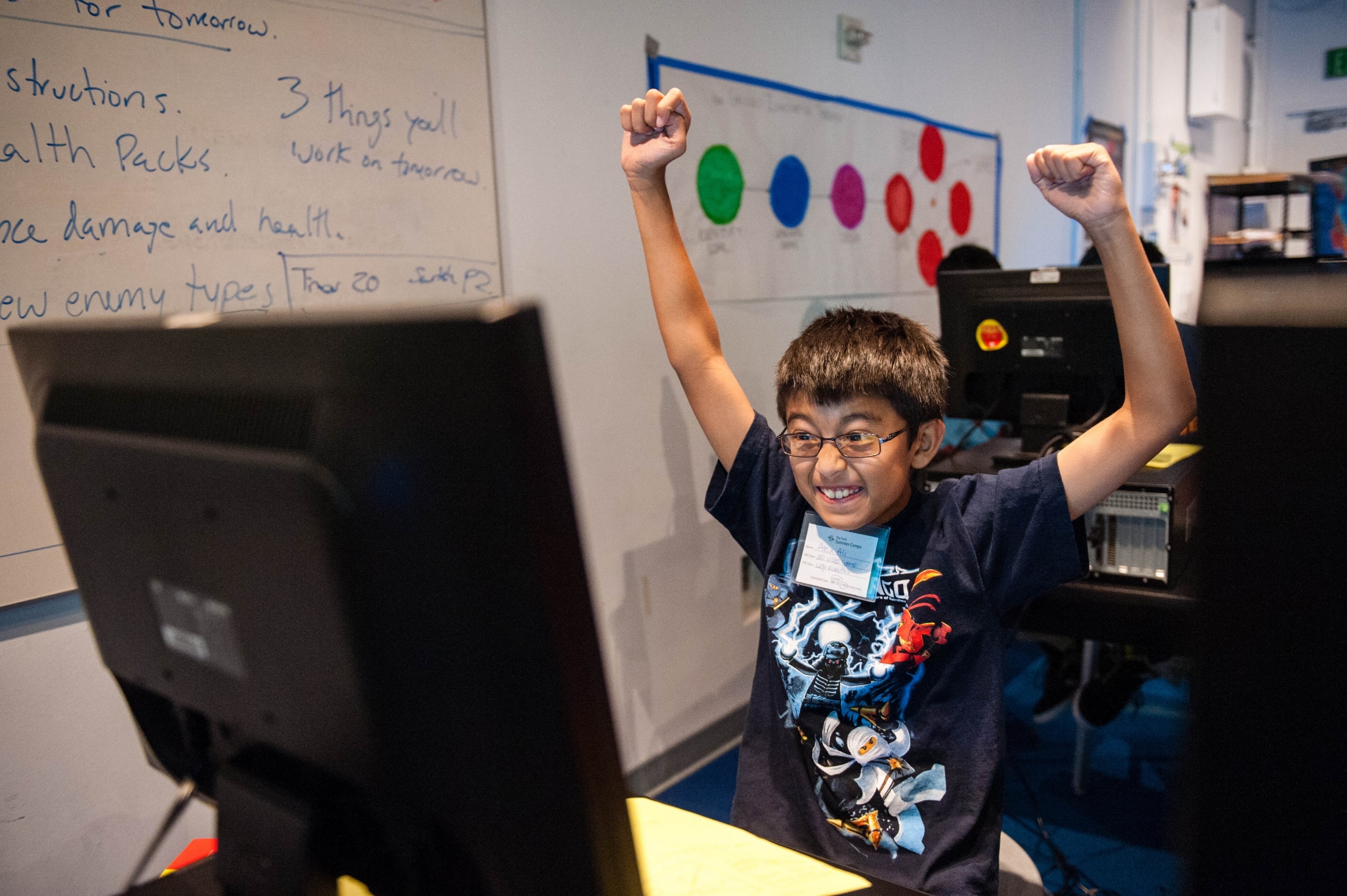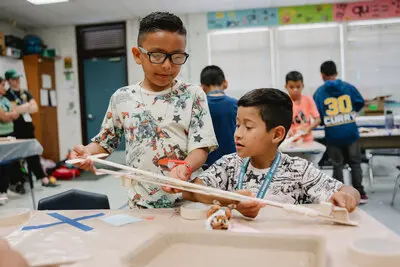Ask any Galileo camper what they think about mistakes and you’re likely to hear the word “marvelous.” That’s because Galileo’s mission is to teach kids how to innovate, and, as every innovator knows, the greatest learnings often spring from the biggest failures. In fact, most every great invention, solution or cool new product doesn’t start out awesome—it’s the result of lots of edifying wrong turns and informative screwups along the way.
Transforming mistakes into learning opportunities
It’s one thing to celebrate a mistake. But learning from it isn’t a given—the trick is to transform each failure into a lesson for the future. And the first step in that process is figuring out just what kind of mistake it was.
As Mindset Works’ co-founder and CEO Eduardo Briceño explains, not all mistakes are created equal. He categorizes them into four types, each with its own distinct circumstances, stakes and opportunities for learning. Here’s how to recognize those types and frame kids’ post-mistake learning for each.

#1: Stretch Mistakes (high intentionality, higher learning opportunity)
What they are: Stretch mistakes are mistakes people make when they’re pushing just beyond their current abilities—the really rich, wonderful mistakes that happen in the ZPD. They might occur while kids are trying to learn a new baseball pitch, perfect a particular piece of music on the piano or draw a realistic-looking portrait. The intentionality is high because they’re deliberately trying something that’s a little beyond what they know they can do. The learning opportunity is high because, as we mentioned above, the ZPD is where the best learning happens—when you’re in it, you’re operating just outside your comfort zone, using a solid base of knowledge and experience to plug in the new material and make real learning gains.
How to help kids learn from them: Stretch mistakes are awesome, productive mistakes, so be sure to give a kid who’s making them plenty of encouragement. Remind them how good it will feel to reach their goal and that it’s natural to have some setbacks when they’re working toward something new. If they keep making the same mistake over and over again, though, they may need some guidance in adjusting their challenge a bit, bringing it a little closer to their current skill set or adding a few more steps between where they are and their ultimate goal. Challenging themselves is great, but not if they’re too frustrated to stay the course.
#2: A-Ha Moment Mistakes (low intentionality, higher learning opportunity)
What they are: An ah-ha moment mistake happens when someone does just what they set out to do, but realizes in retrospect that they made a mistake. It’s low intention (they didn’t realize they were making a mistake), but high learning opportunity (because now they know something they didn’t know pre-mistake—and the surprise of learning it probably made it pretty memorable). An ah-ha moment mistake could be a kid ruining their new shirt because they didn’t realize food coloring could stain, or making a wrong assumption about another kid (assuming the other kid wanted help when they didn’t, assuming the kid was being rude when they were just dealing with an underlying issue, etc.).
How to help kids learn from them: While ah-ha moment mistakes can be positive for learning, they can also present a lot of opportunities to feel bad. Remind the kid who makes one that they didn’t mean to mess up—they were just missing some important information—and that it’s important to forgive themselves. The lessons a mistake-maker can take away from an ah-ha moment can be specific new content information they can use next time (now I know food coloring stains, so I’ll be careful using it around fabric), or newfound empathy they can use in similar situations moving forward (now I know other people might not always want my help/might have more on their mind than meets the eye, so I’ll be more understanding).
#3: Sloppy Mistakes (low intentionality, lower learning opportunity)
What they are: A sloppy mistake is just a plain, old-fashioned goof. It happens when someone is doing something they know how to do perfectly well, but simply mess up. Kids might make one by adding a simple sum wrong on a math test, missing a free throw they’ve made a million times before or flubbing the lyrics to a song they sing every week. Intentionality here is low because they wouldn’t expect to make a mistake doing something that’s so perfectly inside their comfort zone. The learning opportunity is a bit lower than the first two types as well, as sloppy mistakes usually happen doing something you’ve already learned.
How to help kids learn from them: The first thing to remind a kid who makes a sloppy mistake is that they’re only human! We all lose focus and screw up something simple from time to time. Even so, every mistake is worthy of reflection, so talk to your mistake-maker about whether this was simply a one-off misstep, or if there’s something they can learn from it. If it’s a sloppy mistake that’s happening a lot, maybe they need to change some habits, like getting more sleep or finding a little distraction-free time to relax before a test/shot/rehearsal. There might be an ah-ha moment lurking beneath that sloppy mistake that could uncover patterns or help them develop better habits.
#4: High-Stakes Mistakes (high intentionality, lower learning opportunity)
What they are: There are two main types of high-stakes mistakes. The first is one in which significant risk is involved—rock climbing, driving a car—and a mistake could be catastrophic. In these cases, it’s important to remind kids NOT to push outside of their comfort zone unless they are well prepared and carefully supervised. These situations are potentially dangerous, and the opportunity to learn is not worth the risk of a mistake. The second, more common type of high-stakes mistake is something a kid has worked hard on (high intentionality) and has to deliver under pressure, like, for example, competing in a dance competition, playing in a championship game or taking the SAT. The learning opportunity for mistakes in these types of situations can be a bit lower than others, since they’re more about delivering a good performance in the moment than taking a risk for the sake of learning.
How to help kids learn from them: High stakes come with high expectations, so kids are likely to feel extremely disappointed if they make mistakes in these types of situations. But there’s always something to be learned through reflection. Eduardo Briceño recommends this course of action if kids don’t achieve their high-stakes goals: “let’s reflect on the progress we’ve made through time, on the approaches that have and haven’t helped us grow, and on what we can do to grow more effectively. Then let’s go back to spending most of our time practicing, challenging ourselves, and seeking stretch mistakes and learning from those mistakes.” This kind of reflective practice can put failure in perspective, and help kids level up for their next high-stakes experience.

Mistakes are a regular part of life and an essential part of innovation—but they’re only marvelous if we can normalize them, celebrate them and figure out what they’re made of to get the most learning out of every one.





